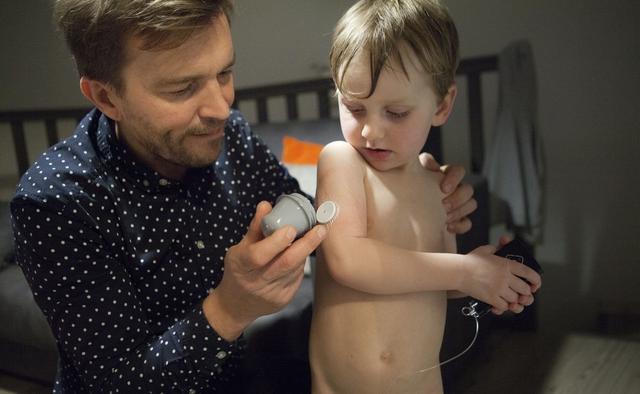How far has the world researched type 1 diabetes?
For thousands of years since diabetes was discovered, there has been research on how to treat it. Treatment has progressed by leaps and bounds since the discovery of insulin, and research into treatment has focused on changing the dosage form and action of insulin, so that children with diabetes can how to be safer and more effective and better adherent to insulin medication, so from crude to refined at the beginning, from syringes to precise insulin pump therapy, insulin injections for people with type 1 diabetes have evolved to be more comfortable and safer. Testing technology has also evolved, from venous blood to sensors to monitor blood sugar, and the lives of children with diabetes are changing markedly.
In recent years, research in type 1 diabetes has moved toward molecular biology and genetics, and unfortunately, progress has been made, but there really isn't much that can be applied to the clinic.
Type 1 diabetes mellitus is a complex, multifactorial disease, the main pathogenic mechanism is due to autoimmunity, caused by inflammatory cell infiltration of pancreatic islets, pancreatic islet B-cell damage, which leads to absolute deficiency of insulin secretion.
It is currently believed that the major environmental risk factors associated with type 1 diabetes include viral infections, chemicals, dietary factors, prenatal and perinatal exposures, and life stressors.
The association of viral infections with type 1 diabetes is suggested in a large body of epidemiologic and serologic evidence. For example, congenital rubella in the offspring caused by rubella virus infection in the mother during pregnancy was found to be associated with type 1 diabetes at an early stage.
Type 1 diabetes is thought to be an autoimmune disease due to absolute deficiency in insulin secretion as a result of infiltration of pancreatic islets by T-lymphocytes directed against autoantibodies and destruction of B-cells. It often coexists with other autoimmune diseases such as Hashimoto's thyroiditis and Addison's disease.
The same infiltration of monocytes is found in the pancreatic islets of patients with type 1 diabetes. It is suggested that B cells and antibodies are involved in the autoimmune process. specific autoantigens and antibodies produced by B cells can help in the diagnosis of type 1 diabetes.
Type 1 diabetes develops at an early age, usually in childhood or adolescence. Due to the destruction of pancreatic islets caused by autoimmunity, patients usually have severely deficient levels of insulin secretion. There is positive expression of autoimmune antibodies.
Autoantibodies, including insulin, glutamine decarboxylase, tyrosine phosphatase-like protein, and zinc ion transporter bodies, have been identified and are currently used for clinical diagnosis of type 1 diabetes or prediction of type 1 diabetes risk in people with a family history of the disease.
To summarize: the population with type 1 diabetes is still in need of a treatment-based approach, and various studies are underway with the expectation that one day it will be applied to the clinic as soon as possible.
I'm Dr. Sun, pay attention to Dr. Sun talk about sugar, continue to learn more quality health knowledge, help please like, have questions please leave a message, will reply!
What I do know is that insulin is injected, and the body is equipped with tiny miniature pumps that automatically eject insulin into the body at regular intervals.
There's no cure. You have to rely on Auntie's insulin.
So far, the world's medical community hasn't found the cause of the disease.
This question and answer are from the site users, does not represent the position of the site, such as infringement, please contact the administrator to delete.